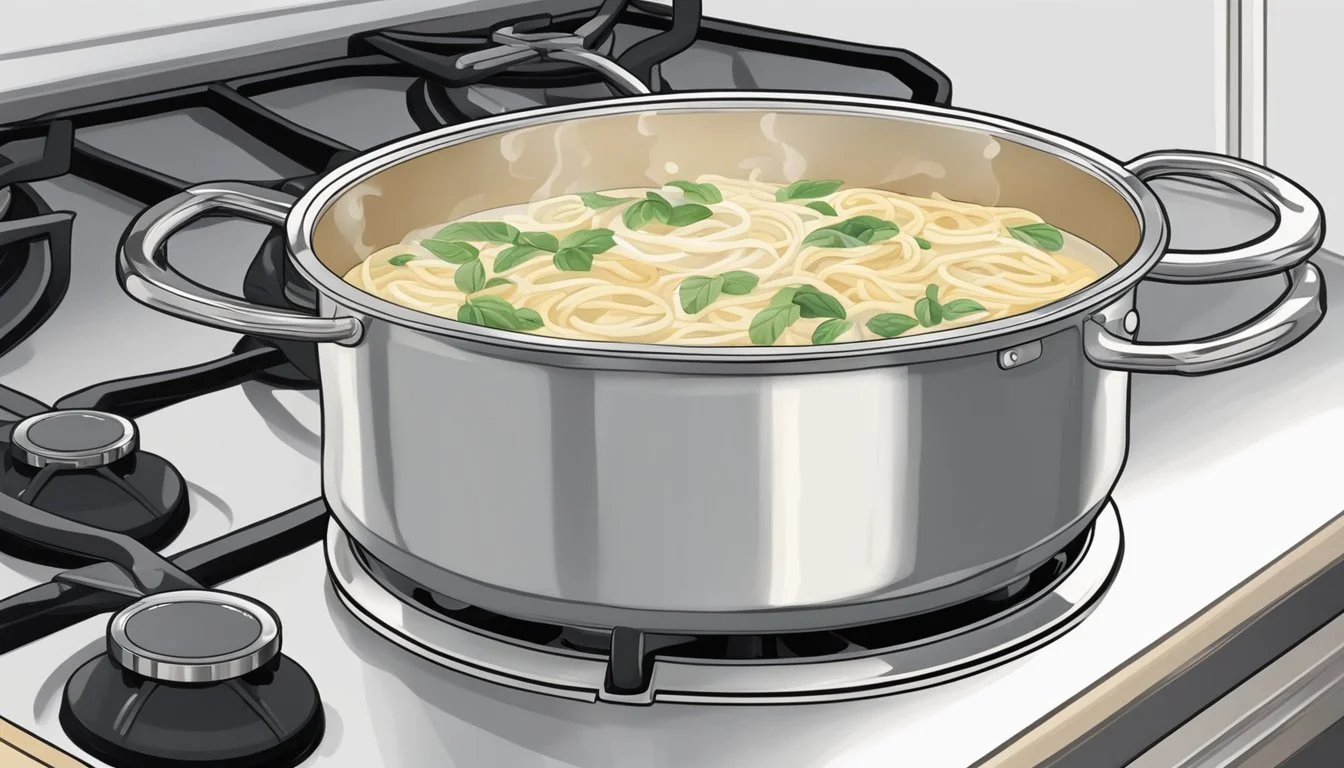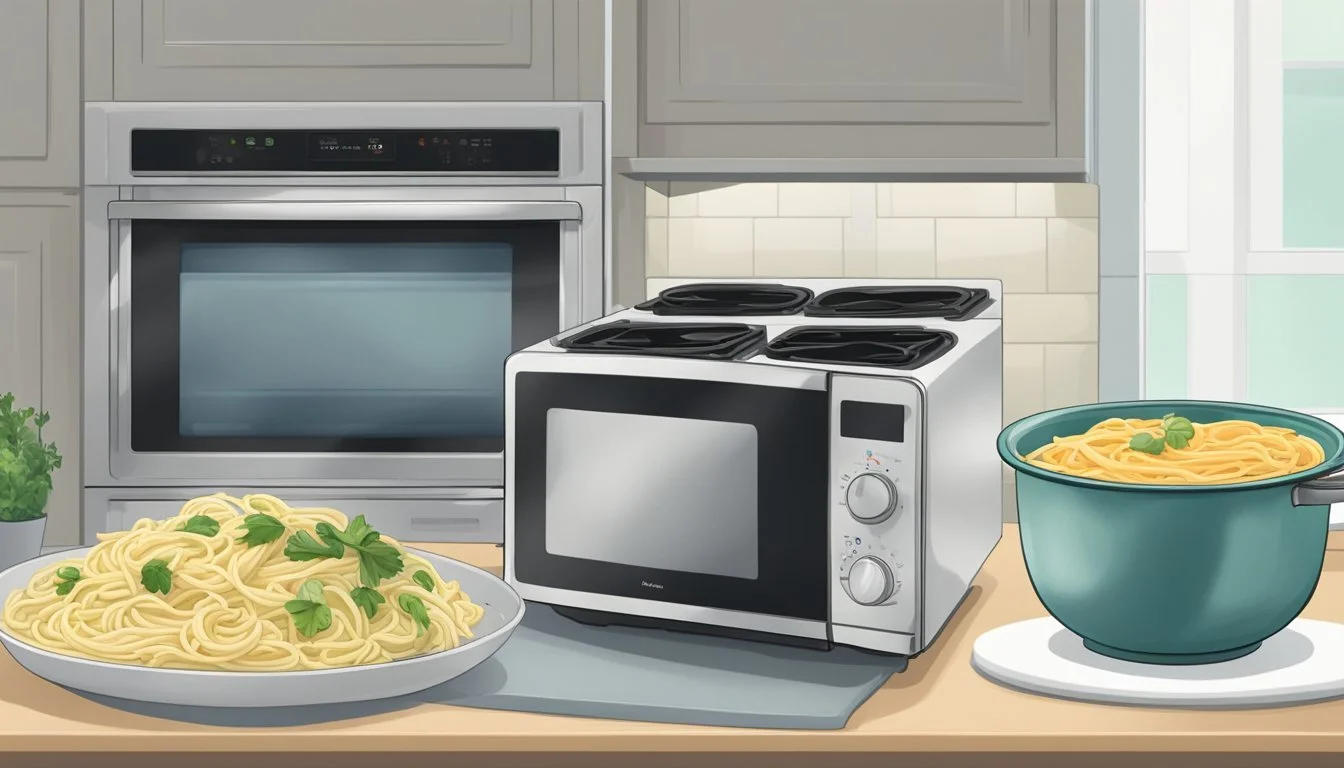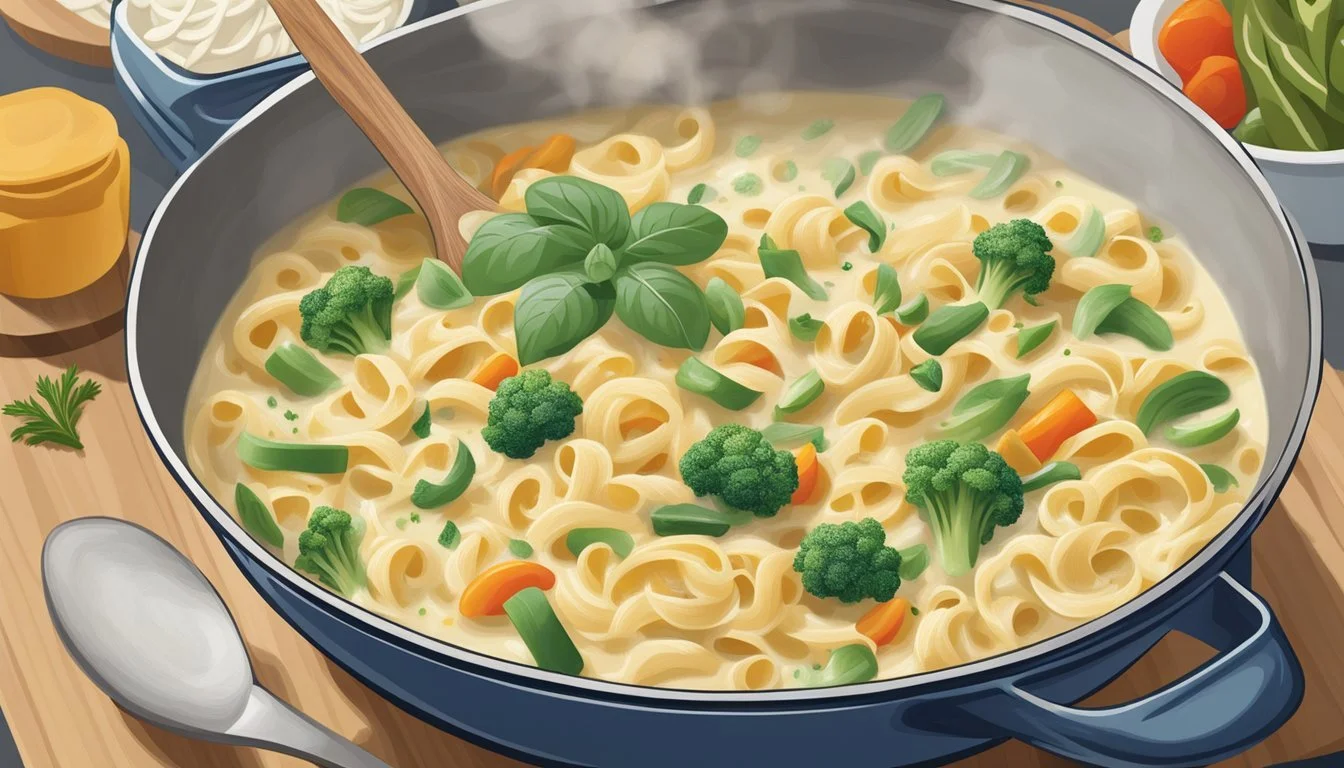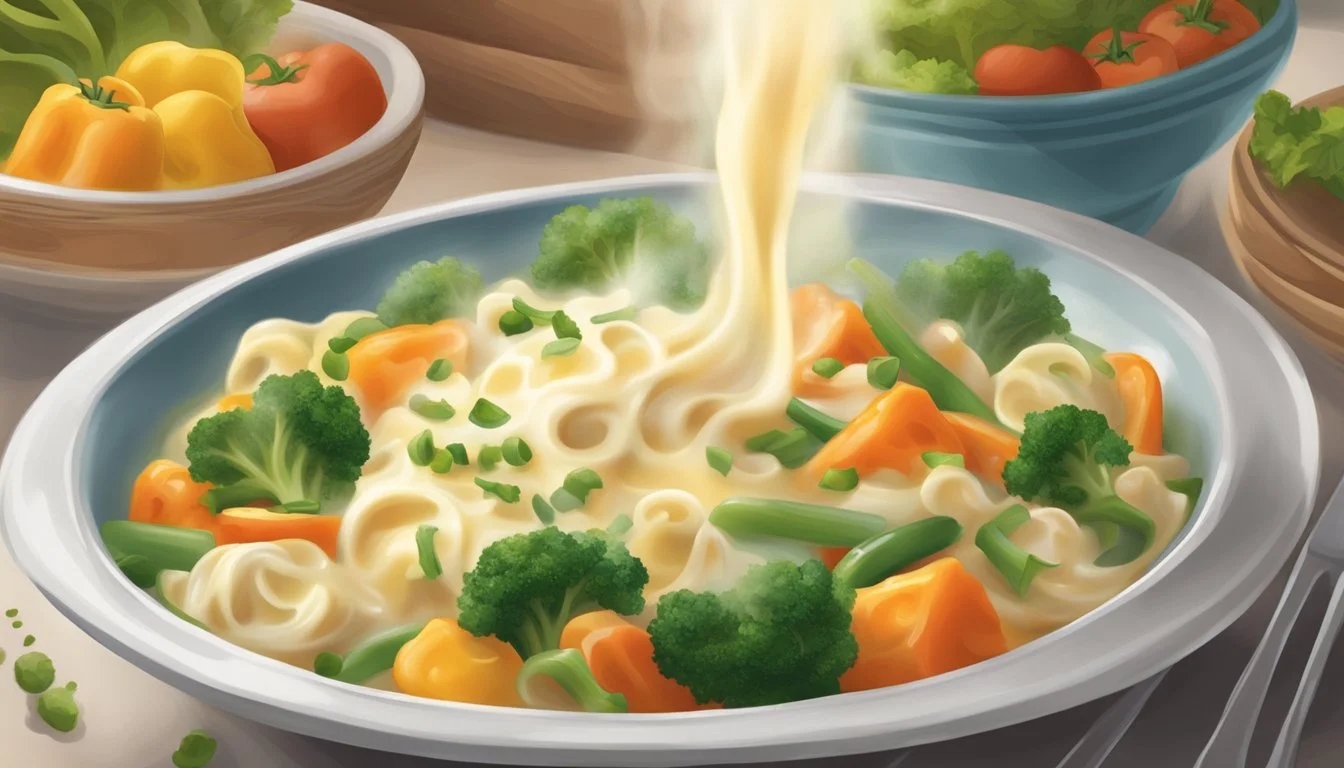How to Reheat Alfredo Primavera
Best Techniques for Perfect Consistency
Alfredo Primavera is a delightful dish combining the creamy richness of Alfredo sauce with the freshness of seasonal vegetables. When it comes to leftovers, maintaining that perfect balance of flavors and textures can be challenging, yet entirely possible with the right approach. To reheat Alfredo Primavera successfully, consider using methods that preserve its creamy consistency and vibrant flavors.
Reheating in the oven tends to be the most effective way. Place the Alfredo Primavera in an oven-safe dish, add a small amount of water or milk, cover with foil, and bake at 375 degrees Fahrenheit for about 20 minutes. This method ensures the sauce stays creamy and the vegetables do not become soggy.
For a quicker option, the microwave can also work well. Transfer the pasta to a microwave-safe bowl, cover loosely with a microwave-safe lid, and heat on medium in one-minute intervals. Stir after each interval and add a splash of water if the sauce appears dry. This ensures an even reheating and maintains the dish's delicious texture and flavor.
Understanding Alfredo Primavera
Alfredo Primavera is a delightful Italian dish combining tender pasta with a creamy Alfredo sauce and a medley of seasonal vegetables. This dish is celebrated for its richness provided by the creamy sauce usually made from butter, heavy cream, and Parmesan cheese.
Ingredients:
Pasta: Typically fettuccine or linguine.
Creamy Sauce: A blend of butter, heavy cream, and grated Parmesan.
Vegetables: Seasonal selections such as broccoli, bell peppers, zucchini, and peas.
The dish caters to a variety of tastes, making it a popular choice for vegetarian pasta lovers. The vegetables add vibrant colors and different textures, which contrast nicely against the creaminess of the sauce.
Herbs and Seasoning:
Garlic: Often sautéed to infuse the sauce with flavor.
Basil or Parsley: Fresh herbs enhance the dish's aromatic qualities.
Salt and Pepper: Essential for seasoning the sauce and vegetables.
Alfredo Primavera is traditionally Italian but has variations to accommodate local tastes. The key to a great Alfredo Primavera lies in balancing the flavors between the rich, creamy sauce and the freshness of the vegetables.
Preparing for Reheating
Proper storage and bringing your Alfredo Primavera to room temperature are crucial steps to ensure it retains its texture and flavor when reheated.
Storage Recommendations
Store Alfredo Primavera in an airtight container to keep it fresh. Use containers made of glass or BPA-free plastic for best results. This will prevent moisture loss and keep the sauce creamy.
Ensure the pasta is cooled to room temperature before transferring it to the container. This reduces condensation and helps maintain the dish's consistency. Label the container with the date to monitor its freshness.
Avoid using large containers as they may trap too much air. Instead, use smaller containers and pack the pasta tightly.
Bringing to Room Temperature
When preparing to reheat, remove the Alfredo Primavera from the refrigerator and let it sit at room temperature for 15-30 minutes. This step helps the dish reheat more evenly.
While waiting, ensure the pasta is covered loosely to prevent contamination. Fresh veggies in the Primavera benefit from this step, as they will retain their texture better when brought to a warmer temperature before reheating.
Skipping this step can lead to uneven heating and a less enjoyable dish, as the sauce may separate or become grainy.
Reheating Techniques
Reheating Alfredo Primavera requires careful attention to retain its creamy texture and rich flavor. Various methods including ovens, stovetops, microwaves, and air fryers, ensure the dish remains delicious.
Oven Method
Preheat the oven to 375 degrees Fahrenheit (190 degrees Celsius).
Transfer the Alfredo Primavera to a glass or ceramic baking dish. Add a small amount of water or heavy cream to maintain consistency and prevent drying out. Cover the dish with aluminum foil to lock in moisture.
Place the dish in the oven for 10 minutes. Remove, stir to ensure even heating, and re-cover. Continue heating for another 10 minutes or until the dish reaches the desired temperature. Sprinkle Parmesan cheese on top if desired before serving.
Stovetop Method
Place a saucepan over low to medium heat.
Add the Alfredo Primavera to the pan, along with a small amount of water, milk, or heavy cream. Stir frequently to reheat evenly and prevent the sauce from separating. Heating slowly is crucial for maintaining the creamy texture.
Continue stirring until the primavera is warmed through. If the sauce appears too thick, add more liquid in small increments and stir well.
Microwave Method
Use a microwave-safe bowl for the Alfredo Primavera.
Cover the bowl with a microwave-safe lid or plastic wrap to keep moisture in. Heat on high for 1 minute. Carefully remove the cover, stir well, and check the temperature. Repeat in 1-minute increments until the dish is thoroughly heated.
Occasionally add water or milk to keep the sauce creamy and prevent it from drying out.
Air Fryer Method
Set the air fryer to 350 degrees Fahrenheit.
Place the Alfredo Primavera in an air fryer-safe dish or line the fryer basket with aluminum foil. Add a few drops of water or cream to maintain consistency. Reheat for approximately 5-7 minutes.
Check the dish halfway through, stirring once to ensure even heating. The air fryer method is quick and helps to preserve the texture and flavor of the dish.
Adding Moisture Back to the Dis
Maintaining the creamy texture of Alfredo Primavera when reheating can be a challenge. Adding moisture is key to preserving its richness and preventing it from drying out.
Using Creams and Fats
Incorporating heavy cream, cream sauce, or fats like butter and olive oil can enhance the creaminess of the dish.
To use heavy cream, simply add a splash before reheating. This ensures the pasta remains creamy and smooth.
Butter can also be melted into the dish prior to reheating.
Using olive oil similarly, drizzle a small amount over the pasta and mix well to keep the sauce from separating and drying.
Adding these fats helps retain the decadent nature of Alfredo Primavera, making it taste freshly made.
Utilizing Broths and Stocks
Chicken broth or vegetable stock are excellent choices for adding moisture without altering the flavor profile of the dish.
Pour a few tablespoons of broth or stock over the pasta.
This step is crucial before reheating, as it keeps the pasta from becoming dry.
Both chicken broth and vegetable stock blend seamlessly with the existing flavors while adding necessary moisture.
Lightly tossing the pasta ensures even distribution of the broth or stock, ensuring each bite remains flavorful and moist.
Enhancing Flavor Post-Reheating
After reheating Alfredo Primavera, incorporating fresh ingredients and adjusting seasoning can significantly elevate its taste. These steps ensure the dish maintains or even surpasses its original flavor profile.
Incorporating Fresh Ingredients
Adding fresh ingredients can breathe new life into reheated Alfredo Primavera. A sprinkle of Parmesan cheese enhances the creamy texture and adds a burst of flavor.
Fresh herbs like basil or parsley provide a vibrant touch. Chopped garlic sautéed with a bit of extra virgin olive oil can inject a rich, aromatic note.
Drizzling some olive oil just before serving helps to make the dish feel freshly made. For a hint of spice, a dash of crushed red pepper flakes can be effective.
Adjusting Seasoning
Proper seasoning is crucial to restoring and enhancing the flavor of reheated Alfredo Primavera. Tasting the dish and identifying any imbalances is the first step.
Adding kosher salt and freshly ground black pepper in small increments can correct the seasoning. Fresh basil leaves or a touch of oregano can add complexity to the flavors.
Sometimes reheated pasta may benefit from a squeeze of lemon juice to brighten the overall taste. Ensuring these adjustments can make a significant difference and bring the dish back to life.
Preventing Common Reheating Mistakes
Reheating Alfredo Primavera can be tricky, but avoiding common mistakes can make the process smoother.
Using low heat is crucial. High heat can cause the sauce to separate or become oily. Opt for low or medium heat on the stove or in the oven.
Stirring is essential. Frequently stirring helps to distribute the heat evenly and maintain a smooth consistency.
When using a microwave, it's best to use a lower power setting. This helps prevent overheating certain spots and keeps the dish from drying out.
Avoid reheating with plastic wrap directly touching the food. Instead, use a microwave-safe cover or a plate to avoid chemical leaching.
A slow cooker can be a good option for reheating. Set it on low and stir occasionally to ensure an even heat distribution.
Heating too fast can ruin the texture. Always aim for a slow reheat and avoid making the dish too hot at once.
A table might help:
Method Pros Cons Oven Even heating, best texture Slower, requires monitoring Stove Good control over heat Requires frequent stirring Microwave Fast, convenient Risk of uneven heating Slow Cooker Consistent low heat Time-consuming, frequent stirring needed
Small adjustments and precautions ensure Alfredo Primavera stays creamy and delicious when reheated.
Serving and Pairing Suggestions
When reheating Alfredo Primavera, there are various ways to elevate the dish by serving it with complementary proteins and sides.
Protein Pairings
Grilled Chicken: This lean protein pairs exceptionally well with the creamy Alfredo sauce and fresh veggies.
Shrimp: Lightly sautéed or grilled shrimp adds a touch of elegance and extra flavor.
Salmon: A seared or baked salmon fillet can provide a heartier option that's still flavorful.
Vegetable Sides
Roasted Asparagus: Offers a crunchy texture that complements the creaminess of the pasta.
Sautéed Spinach: Light and healthy, it adds a pop of color and nutrients.
Fresh Spring Salad: Mixed greens with a light vinaigrette bring a refreshing contrast.
Bread and Wine
Italian Bread: Crusty Italian bread or garlic bread can help to soak up any extra sauce.
Wine Selection: Pair with a crisp white wine like Pinot Grigio or a light red such as Sangiovese for an authentic Italian experience.
These suggestions aim to enhance the flavors and textures of Alfredo Primavera, making it a memorable meal.
Conclusion
Reheating Alfredo primavera ensures that you can enjoy your leftover Alfredo pasta with nearly the same flavor and texture as when it was first made.
Using methods like the oven and microwave provides options for a quick meal or a more leisurely heating process, depending on your schedule.
The oven method, using a baking dish and covering with foil, is excellent for reheating larger portions, making it ideal for lunch gatherings. The method ensures even heating and prevents the sauce from drying out.
For a fast and simple approach, the microwave method, where the pasta is covered and heated in short intervals, is best. Stirring between intervals ensures even heating, making this a practical option for weekday meals or a quick meal.
If reheating homemade Alfredo pasta, adding a little water, milk, or extra sauce during reheating helps maintain the creamy consistency. The pasta shouldn't dry out, and the flavors remain balanced.
Alfredo primavera is a versatile dish, and these methods allow flexibility. Adjusting the reheating method based on the type and amount of leftovers ensures an enjoyable meal every time.









